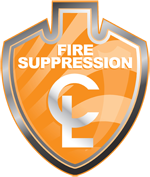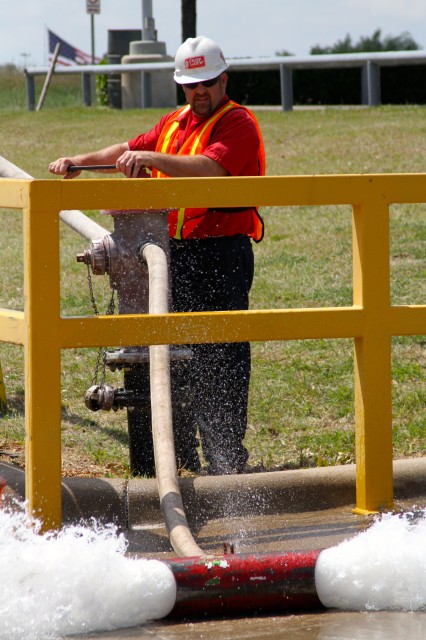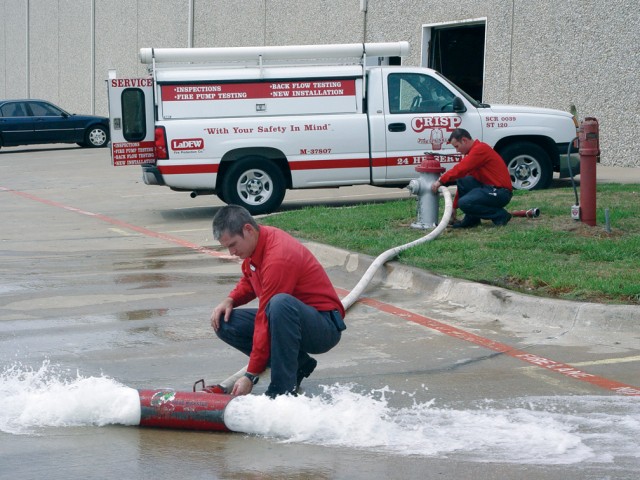In order for an automatic fire sprinkler system to be effective, the design, installation and maintenance of water supplies to a system is critical. Without proper fire suppression installation, you could experience a dangerous accident at your location

Water continues to be the most readily available and plentiful fire-extinguishing agent. In addition to knowing that water is available for fire-fighting operations, it is also important that you have a company that can provide you the expertise and knowledge of how water extinguishes fire and the advantages and disadvantages of its use. This is where Crisp-LaDew takes over for you.
In any kind of distribution system, water must be available at sufficient quantities and adequate pressures to be effective. See the corresponding photos on this page of Crisp-LaDew professionals testing and monitoring water flow to ensure that a system is operating at maximum capacity. The professionals at Crisp-LaDew understand how water is distributed and what physical and design factors can positively or negatively affect its availability.
Fire Hydrants – Fire Suppression Installation
 Fire hydrants are installed at locations and with spacing consideration for convenient use by fire departments. Hydrant locations should also be well thought out to meet the needed fire flows for the buildings being protected. Proper hydrant distribution and location is an important feature of an accessible water supply system.
Fire hydrants are installed at locations and with spacing consideration for convenient use by fire departments. Hydrant locations should also be well thought out to meet the needed fire flows for the buildings being protected. Proper hydrant distribution and location is an important feature of an accessible water supply system.
The International Fire Code ®, 2009 edition, Section 507, provides the following requirements for hydrant locations:
-
- Where a portion of a facility or building is more than 400 ft from a hydrant, on-site fire hydrants and mains shall be provided where required by the fire code official.
- For certain occupancies (R-3 and Group U), the distance requirement is 600 ft.
- If the building is equipped with an automatic fire sprinkler, the distance requirement is 600 ft.
While there are different sources that provide information on the recommended spacing of hydrants, it is ultimately the determination of the authority having jurisdiction (AHJ) to make these decisions.

